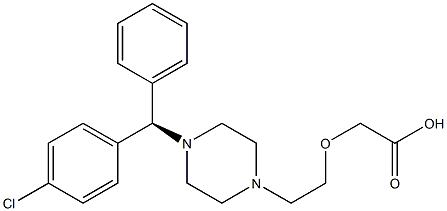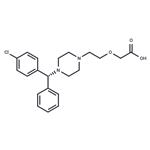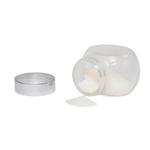The (R)-enantiomer of the second-generation antihistamine cetirizine, levocetirizine,
was first introduced in Germany for seasonal allergic rhinitis (including ocular symptoms),
perennial allergic rhinitis and chronic idiopathic urticaria. The dihydrochloride salt can be
prepared in four steps from optically active 4-chlorobenzhydrylamine obtained by
resolution of its racemate with (+)-tartaric acid. Levocetirizine (eutomer) is a 2-fold more
potent H1 antagonist than cetirizine whereas the other enantiomer (distomer) is 10-fold
less potent compared to levocetirizine. Pharmacodynamic studies on healthy volunteers
showed that compared to cetirizine, half the dose of levocetirizine (5 mg) was necessary to
obtain similar inhibitory effects in the skin test of histamine-induced wheal and flare as well
as on histamine-induced nasal congestion and nasal resistance. There was no evidence of
chiral inversion of levocetirizine in vivo in several species including human. The daily dose
of drug is rapidly and extensively absorbed in human. Interestingly, its volume of
distribution (0.41 kg/L) is smaller than that of the distomer (0.60 kg/L). The low volume of
distribution is considered as favorable for an antihistamine both in terms of efficacy and
safety. Due to its high metabolic stability and lack of effect on the activities of the major
CYP isoenzymes, levocetirizine is unlikely to cause interactions with other administered
drugs. No clinically relevant effect on electrocardiograms of healthy volunteers was
detected.
Labeled cetirizine, intended for use as an internal standard for the quantification of cetirizine by GC- or LC-mass spectrometry.
H1 antihistamine, antiallergic
A nonsedating type histamine H1-receptor antagonist. A major metabolite of Hydroxyzine. Pharmacological activity resides primarily in the (R)-isomer. Antihystaminic.
ChEBI: 2-[2-[4-[(R)-(4-chlorophenyl)-phenylmethyl]-1-piperazinyl]ethoxy]acetic acid is a diarylmethane.
Antihistamine:
Symptomatic relief of allergy such as hay fever,
urticaria



